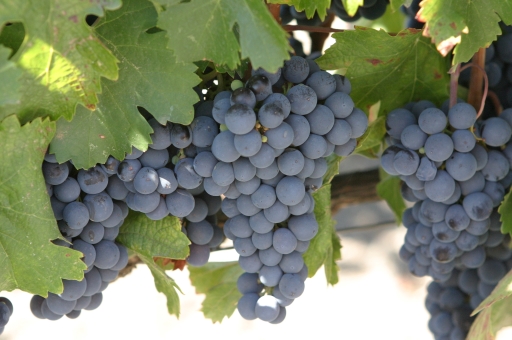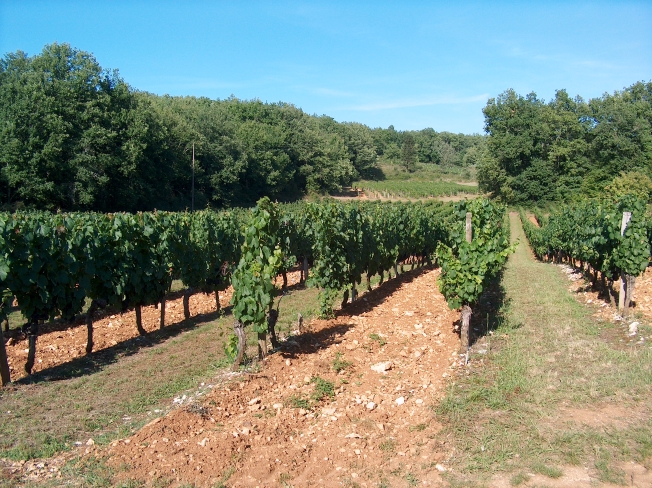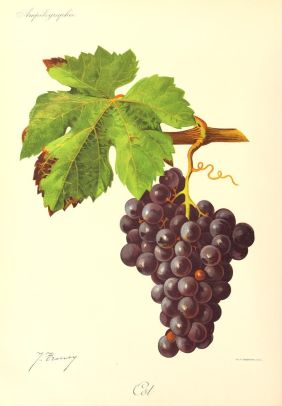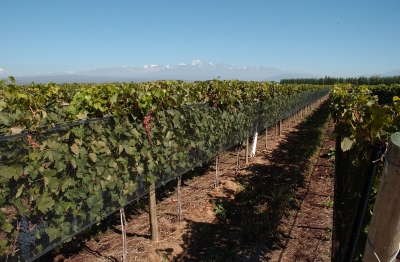The story of Malbec, from Cahors to Mendoza
The grape variety, known today as Malbec has a rich and strange history. It almost disappeared, several times, but always came back. On this page, I will tell you the story of Malbec.

The origin of what we call, today, Malbec, is mysterious. It is the cross between an ancient red grape variety from Gaillac (south West of France), the Prunelard, and an almost extinct red grape variety recently identified (1992) in Britanny, near Saint Malot, and strangely called Magdelaine Noire des Charentes. This is the first secret of Malbec, one parent survived more than 2000 years in a region not well known for its vineyard and its winemaking.
Malbec was used for the first time in the Lot Valley around the parish of Cahors in the middle of the Middle Ages and it was a revolution.

For centuries, red wine was very clear, almost like a rosé, and was called clairet (from the French “clair”). But with this grape, Malbec, the wine was darker, almost black. A revolution! And people liked it. It was exported to Bordeaux via the river and even in England (the fact that Bordeaux was a port and was part of the English kingdom helped a lot).
But the English were not the only ones to like this variety. The French king, Francis the First (or François Premier), planted the variety in the Loire Valley in the 16° century. The cultivar did not have any official name, it can be called Auxerois, Noir du Quercy, or other names, in the Loire region, it gets one of these well-known names, the Côt (Malbec has several different names, 50 and more).

The Church also loved the wine, thanks to Pope John XXII, who brought the wine from his natal city, Cahors. The wine served as sacramental wine for centuries.
At the same time, the region surrounding Cahors, Dordogne, Montauban, and of course, Bordeaux, started to plant the variety. This was the moment when Malbec got its name. Before several names were used depending on the region, Côt, Auxerois Noir, Quercy, Plant du Lot to name just a few. In Bordeaux, the variety was introduced by a Hungarian merchant named Malbeck. This is the moment when the Malbec fund its name. Before the phylloxera crisis, Malbec was the principal cultivar in Bordeaux, the main one in Cahors, and was used in the Touraine region but was confidential elsewhere until Michel Pouget introduced it in Argentina where Malbec was ready to start a new chapter in its journey.
Michel Pouget was a famous ampelographer (a vine specialist). In the mid-1800s, he was invited to Chile to develop the vineyard. The goal was to find European cultivars that could adapt to the Chilian climate. Puget comes with Bordeaux cultivars, Cabernet Sauvignon, Merlot, Carmenère, and Malbec.
One Argentinian politician (he would later become the president of Argentina), Domingo Faustino Sarmiento, was very interested in Pouget’s work, and he encouraged the governor of the Mendoza region to invite Pouget. In 1853, Michel Pouget introduced Bordeaux cultivars to Mendoza and realized that Malbec was perfectly adapted to the Andes mountains. The region started with less than 2000 hectares, and 20 years later the vineyard grew to more than 10000 hectares—the beginning of the Argentinian wine.

In the mid-1800s, Malbec was already present in the old and new worlds. But it is at this time that the cultivar will enter a series of disastrous events.
The first event was the phylloxera crisis that hit the French vineyard by the end of the 19th century. The solution found at this time was grafting vines with an American root. For Malbec, it did not work as expected. The cultivar becomes more vulnerable to other threats (coulure, downy mildew) and becomes too productive. Worst, grafted Malbec was not adapted to limestone soil.
Malbec, once preeminent in Bordeaux started to be replaced by Merlot and Cabernet Franc. The cultivar almost disappears in Cahors, where the soil is made of limestone.
In 1947, a wine cooperative restarted to plant Malbec in Cahors with new rootstocks. Less than ten years later, a frost destroyed almost all Vineyards in the Southwest of France. Unlike the Bordeaux region, Cahors replanted Malbec along with Merlot and Tannat. In 1971, the vineyard that just received its AOC (Appelation d’Origine Controlée), had a size of 400 hectares, in 2000 the size was multiplied by 10.
In the same period, in Argentina, the vineyards enter trouble. Local wine consumption was the locomotive of the vineyard, but once the country entered an economic crisis, the consumption dropped drastically. In this situation, winegrowers stopped planting Malbec and pulled up plants because the yield was too low. Only 9000 hectares were planted in 1990.
History likes to repeat itself. A French oenologist, Michel Rolland, arrived in Mendoza in 1988. His first goal was to prevent winegrowers from pulling up Malbec and to convince them that Malbec had real potential. This was the resurrection of the Argentinian vineyard, with Malbec as the main cultivar. The Argentinian Malbec became famous and appreciated by wine aficionados. Argentina is now the fifth wine producer in the world.
Elsewhere, Malbec is grown in Chile, USA, Australia, New Zeland, Italy and Israel.
Today Malbec is still present in the Cahors region, where winemakers re-invent the way Malbec wine is made for less starkness and more fruits in wine. Wines that are more digest and fresh. The same is true in Bordeaux and Loire, where Malbec is still used for fresher and lighter wine. Argentinian Malbec seduces more and more and the vineyard produces more than 70% of Malbec wine in the world.
Malbec is versatile, it can produce very bold wines to light and fruity ones. The natural wine movement understands it and produces some wonderful bottles, a second youth for the cultivar. Exciting Malbec wines are coming out of Cahors, Bordeaux, Mendoza, Chile, and the west coast of the US.